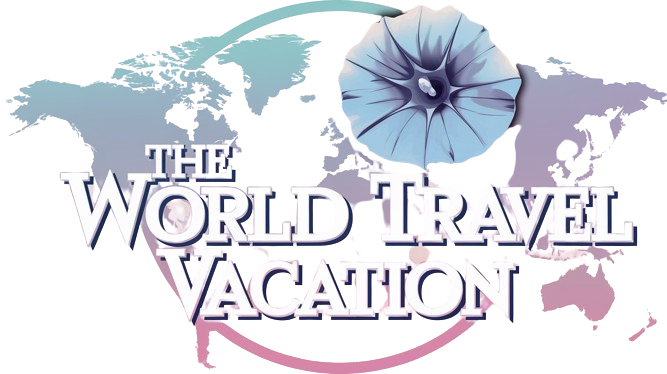Dwelling
»
TOURISM NEWS
»
World Journey & Tourism Council (WTTC) Showcases $67 Billion Indigenous Tourism Progress Potential by 2034
Thursday, October 10, 2024
The World Journey & Tourism Council (WTTC) has unveiled an influential new report at its International Summit in Perth, Western Australia, spotlighting the anticipated $67 billion USD contribution of Indigenous tourism to the worldwide financial system by 2034.
This report underscores the sector’s essential function in fostering financial development, notably in remoted areas, whereas additionally supporting cultural preservation and group empowerment.
Indigenous Tourism: A Catalyst for Financial Development
Indigenous tourism is quick changing into a pivotal financial driver. It generates employment and financial advantages in distant areas, preserves Indigenous cultures, languages, and lands, and affords vacationers an immersive approach to join with Indigenous heritage and traditions.
With the Indigenous tourism market anticipated to develop at a compound annual development price (CAGR) of 4.1% over the subsequent decade, reaching $67 billion, this sector is empowering communities to form their financial destinies.
Curiosity in Aboriginal tourism experiences in Western Australia is on the rise, reaching unprecedented ranges this 12 months. Knowledge from the Customer Experiences and Expectations Analysis (VEER) signifies that almost 9 out of ten guests categorical curiosity (87%), and over a 3rd (36%) engaged in Aboriginal tourism in WA throughout 2023-24. Aboriginal tourism companies proceed to contribute considerably to the Gross State Product in Western Australia, including $63.8 million within the 2021-22 fiscal 12 months.
In Canada, the Indigenous tourism trade helps round 2,000 companies and gives over 39,000 jobs, contributing CA$1.7 billion to the financial system in 2017.
Equally, in Panama’s Guna Yala area, tourism performs a central function in sustaining the Guna individuals and their tradition, making a self-reliant financial system.
This development is pushed by the rising demand for genuine cultural experiences in nations like Canada, Australia, and the US, amongst others.
In Australia alone, over 1.4 million worldwide guests participated in Indigenous tourism actions in 2019, reflecting a mean annual development price of 6% since 2010.
Talking on the world tourism physique’s twenty fourth International Summit in Perth, Western Australia, Julia Simpson, WTTC President & CEO mentioned: “Indigenous tourism just isn’t solely about showcasing wealthy cultural traditions; it’s about empowering communities, creating sustainable jobs, and guaranteeing that Indigenous persons are answerable for their very own tales and financial futures.
“This report demonstrates the immense potential of Indigenous tourism to drive economic growth, particularly in remote regions, while preserving invaluable cultural heritage. As global demand for authentic experiences continues to rise, it is crucial that we support Indigenous businesses and ensure they have access to the resources and funding needed to thrive.”
Robert Taylor, CEO of the Western Australia Indigenous Tourism Operators Council (WAITOC), emphasised the importance of genuine Indigenous experiences. WAITOC has collaborated extensively with Tourism Western Australia to craft a strategic motion plan aimed toward additional advancing Indigenous tourism throughout the state. The Jina: Western Australia Aboriginal Tourism Motion Plan 2021-2025 is designed to foster new companies and promote higher Aboriginal participation within the tourism sector.
“Western Australia is well on its way to becoming the premier destination for authentic Aboriginal experiences in the country,” Mr Taylor mentioned. “Our Camping with Custodians is just one example of the continued growth of Aboriginal tourism in Western Australia. This Australian-first program develops high quality campgrounds on Aboriginal lands,” he mentioned.
“In Could, we celebrated the launch of the seventh web site. Situated in Lombadina, on the Dampier Peninsula north of Broome. These campgrounds are owned and operated by the respective Aboriginal group, bringing funding and employment alternatives.
“We are also seeing a strong growth in product offerings, including several womens-only experiences,” he mentioned.
Defending Cultural Heritage By way of Tourism
The Supporting International Indigenous Tourism report underscores the important function of Indigenous tourism in preserving cultural heritage, languages, and conventional practices. For example, the Sámi individuals of Northern Europe have launched certification marks like “Sámi Duodji” to safeguard their wealthy cultural traditions, whereas Peru’s revolutionary Kipi robotic helps to protect endangered languages, equivalent to Kukama, spoken by fewer than 2,000 individuals.
By embedding cultural parts like these into tourism, Indigenous communities can defend and rejoice their distinctive identities.
Sustainable Profession Alternatives and Illustration
Indigenous tourism additionally affords sustainable profession pathways, as demonstrated by Canada’s Indigenous Tourism Affiliation of Canada (ITAC), which empowers communities to take cost of their futures via tourism. Moreover, nations like Australia and the US are more and more incorporating Indigenous experiences into their nationwide tourism advertising, serving to to make sure genuine illustration.
Entry to Funding and Continued Progress
Whereas Indigenous tourism is rising, many operators nonetheless face challenges in accessing funding. Initiatives equivalent to Canada’s Indigenous Tourism Vacation spot Fund (ITDF), which goals to boost CA$2.6 billion by 2030, search to handle these challenges by creating 800 new Indigenous companies and greater than 21,000 jobs.
These funds are important to make sure that Indigenous communities absolutely profit from the increasing tourism trade and might proceed to develop sustainably.
The WTTC is devoted to supporting Indigenous communities worldwide, advocating for his or her efforts to form their tourism narratives and guaranteeing that Indigenous tourism stays a thriving, self-sustaining trade that advantages all concerned.









